 W
WAngels was a nightclub and music venue in Burnley, England. It became most famous during the early 1990s with the rise of the house music scene, drawing visitors from across the United Kingdom. It occupied part of a multi-storey car park on Curzon St, currently the site of another car park and Primark & Next stores.
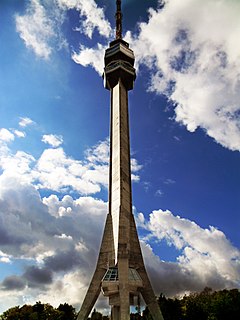 W
WThe Avala Tower is a 204.68 m (672 ft) tall telecommunications tower located on Mount Avala, in Belgrade, Serbia. The original tower was finished in 1965, but was destroyed on 29 April 1999, during the NATO bombing of Yugoslavia. The tower's reconstruction commenced on 21 December 2006 and it was officially opened on 21 April 2010.
 W
WThe Bergin Block was an historic commercial building in Lewiston, Maine.
 W
WThe Bolton Royal Infirmary was an acute general hospital in Chorley Street, Bolton, Greater Manchester, England.
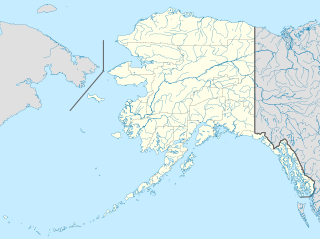 W
WThe Chistochina Trading Post was a historic roadhouse at mile marker 32 of the Tok Cutoff in the Valdez-Cordova Census Area of southeastern Alaska. It consisted of a connected series of log structures, whose main block is two stories high. The main block, which housed traveler accommodations, is connected to a larger single-story structure, which houses the dining room and bar area. A trading post is believed to have been standing here since as early as 1917; the main lodge was built in 1931.
 W
WChurch of Holy Trinity was a Serbian Orthodox Church located in the village of Petrič, municipality of Peja, in Kosovo. It was built in 1992 as a donation of the Karić family. The destruction of the church happened shortly after the arrival of the Italian KFOR troops. During the humanitarian tragedy of the Kosovo War, the church was vandalized and completely destroyed in June 1999 by Albanians.
 W
WCinderella City Mall was a large shopping center located in Englewood, Colorado, United States. The mall was officially opened for business on March 7, 1968, and demolished in 1999. It once was largest covered shopping centre west of the Mississippi River.
 W
WThe Clark Round Barn was an historic building located near Tyrone in rural Monroe County, Iowa, United States. It was built in 1908 for Charles Henry Clark, Sr. The building was a true round barn that measured 48 feet (15 m) in diameter. It featured a conical roof, four-sided cupola and a central silo that was 14-foot (4.3 m) in diameter and 30-foot (9.1 m) high. The siding was pine and the original cedar singles had been replaced in the 1960s. The barn was listed on the National Register of Historic Places since 1986. It was torn down in 1999.
 W
WThe Georgi Dimitrov Mausoleum was a ceremonial tomb on Prince Alexander of Battenberg Square in Sofia, Bulgaria. It was built in 1949 to house the embalmed body of Georgi Dimitrov, the first leader of Communist Bulgaria. After his death in 1950, the second communist leader of Bulgaria, Vasil Kolarov, was buried in the second niche of the east wall of the mausoleum. In 1999, following a heated public debate, it was destroyed by Ivan Kostov's UDF government.
 W
WEdwards Dam was a hydroelectric dam on the Kennebec River in the U.S. state of Maine. It was located in Augusta, Maine, about 40 miles (64 km) upstream from the Atlantic Ocean. Built in 1837 of timber and concrete, it was 917 feet (280 m) long and 24 feet (7.3 m) high. It is most famous for its removal in 1999, the first removal of a hydroelectric dam by the government against the wishes of the dam owner.
 W
WThe Grand Street Bridge was a double-leaf deck-girder bascule bridge in Bridgeport, Connecticut, United States, that spanned the Pequonnock River and connected Grand Street and Artic Street. It was one of three movable bridges planned by the City of Bridgeport in 1916 at the request of the War Department during World War I. Construction was completed in 1919, but the delays surrounding the construction went to the Connecticut Supreme Court in case of Edward DeV. Tompkins, Inc. vs. City of Bridgeport, Connecticut. The court ruled in favor of Tompkins and awarded damages equal to the contract. In 1936, the bridge had excessive settling and required the replacement of its southeast pier. As part of the repairs, a new floor and electrical system were installed. In 1965, the floor was replaced with a steel grate on I-beam floor. In 1984, the eastern approach span was replaced and the northwest trunnion post was reconstructed. The bridge was closed in the 1990s and dismantled in 1999.
 W
WGreece Memorial Hall, also known as Greece Town Hall, was a historic town hall building located at Greece in Monroe County, New York. It consisted of a two-story, side-gabled main building constructed in 1919; two 1+1⁄2-story flanking wings built in 1936, and a two-part addition constructed in 1955. The main building featured a 1+1⁄2-story protruding portico with a stone arch flanked by two open oculi and supported by two stone Tuscan columns.
 W
WThe Green Shack was a restaurant located on Fremont Street in Las Vegas, Nevada that is listed on the United States National Register of Historic Places. It was opened by Mattie Jones and was famous for its fried chicken.
 W
WThe Joseph Green House was a historic two-story home in Orange Park, Florida. It was the oldest building of Orange Park's black community, located at 531 McIntosh Avenue. On July 15, 1998, it was added to the U.S. National Register of Historic Places, becoming the Register's only minority-owned property in Clay County at the time. The following year, it was demolished.
 W
WHarold's Club, also spelled Harolds Club, was a casino in Downtown Reno, Nevada that was established in 1935. The casino closed in 1995 and the building was demolished in 1999.
 W
WHotel Darwin was a hotel located on the Esplanade in central Darwin in the Northern Territory of Australia. It was commonly known as the "Grand Old Duchess". Despite surviving the Bombing of Darwin and Cyclone Tracy, the hotel was demolished in 1999. A bar at the rear of the original site formerly known as the Hot & Cold Bar now functions under the name Hotel Darwin.
 W
WLa Pagoda, officially known as Laboratorios Jorba, was a building in Madrid designed by Spanish architect Miguel Fisac. It was located near the Avenida de América and served as the headquarters of Laboratorios Jorba, a pharmaceutical company. The popular name of the building refers to the visible structure's resemblance to a pagoda, with each floor rotated 45º from the lower one and joined with a hyperboloid ruled surface. It was controversially demolished in 1999, despite being widely recognised as one of the city's architectural icons.
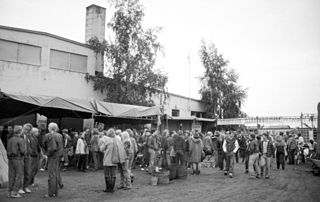 W
WLepakko or Lepakkoluola was a self-managed social centre in Ruoholahti, Helsinki, Finland, functioning from 1979 to 1999.
 W
WThe Lincoln House was an architecturally significant residence in Lincoln, Massachusetts. The house was designed by noted architect Mary Otis Stevens along with her partner and husband Thomas McNulty. It was completed in 1965; the McNulty family lived there for the next 13 years. It then became home to noted opera conductor Sarah Caldwell, who sold it in 1999. The house was demolished that year, and another was built on the site by 2000.
 W
WThe Lytton Road Assembly Rooms were built by E. Fergusson Taylor in New Barnet around 1870.
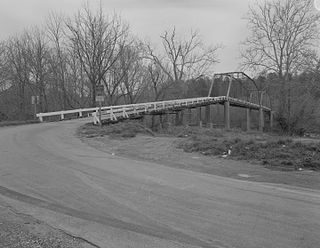 W
WMansion Truss Bridge was a historic Camelback through truss bridge located near Mansion in Campbell County, Virginia. It was built in 1903, and consisted of two camelback through trusses. It was elevated high above the Staunton River and took its name from the 18th century mansion of early settler John Smith.
 W
WMayfair Ballroom was a ballroom and concert hall situated on Newgate Street in Newcastle upon Tyne, England. The oblong room was built to hold 1,500 people and had a small stage along one of the longer walls.
 W
WThe Loop, formerly Methuen Mall, is a shopping mall in Methuen, Massachusetts, United States. It was built in 1973 as an enclosed shopping mall on a 60-acre (240,000 m2) site and initially included Howland and Sears as its anchor stores, as well as 70 other retailers. In 1977, Howlands was replaced by Jordan Marsh, while Filene's Basement was added in the 1980s. Methuen Mall suffered a significant loss in tenancy after both Sears and Filene's Basement moved to The Mall at Rockingham Park across the state line in Salem, New Hampshire. It remained in operation until 1997 and was demolished in early 1999, undergoing redevelopment soon afterward into a strip mall known as The Loop. Major tenants of The Loop are The Home Depot, Marshalls, and AMC Theatres.
 W
WThe Middle Tennessee Mental Health Institute, originally known as the Tennessee Hospital for the Insane and later as the Central State Hospital for the Insane, was a psychiatric hospital located in Nashville, Tennessee.
 W
WThe Naval War College , Short form: 海大 Kaidai) was the staff college of the Imperial Japanese Navy, responsible for training officers for command positions either on warships, or in staff roles.
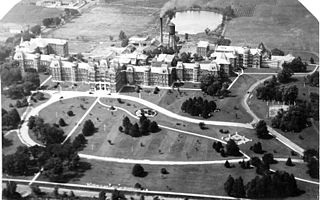 W
WNevada State Hospital was a public psychiatric hospital in Nevada, Missouri, constructed in 1887. The hospital was built in the design of the Kirkbride Plan.
 W
WOne Meridian Plaza was a 38-story high-rise office building in Philadelphia, Pennsylvania, United States. The 492-foot (150-meter) tower was designed by Vincent Kling & Associates and completed in 1972. The building was demolished in 1999, as a result of damage from a fire that began on February 23, 1991. The fire began on the 22nd floor and raged out of control for hours. An investigation of the fire, led by the Office of the Fire Marshal of the City of Philadelphia with assistance from the Bureau of Alcohol, Tobacco, Firearms and Explosives' (ATF) national investigative response team, determined the blaze started after linseed oil–soaked rags ignited. Philadelphia firefighters fought the blaze, but struggled due to a lack of power in the skyscraper and insufficient water pressure from the building's standpipes. Three firefighters died in the twelve-alarm fire after becoming disoriented by heavy smoke. Firefighting efforts inside One Meridian Plaza eventually were abandoned, due to fears the structure would collapse. The fire was only brought under control once it reached the 30th floor, which was one of the few floors that had automatic sprinklers installed. Ten sprinklers held back the fire until it started burning itself out and was finally brought under control almost a full day after it started. The blaze seriously damaged the building, destroying eight floors and damaging neighboring buildings.
 W
WThe Pappenheimer Mansion, later the Ponce de Leon Infirmary, then Midtown Hospital, was located at 144 Ponce de Leon Avenue NE in Midtown Atlanta, on the north side between Piedmont and Juniper streets. Furniture magnate Oscar Pappenheimer (1861-1917) built his first house on the site around 1900, which burned down in 1914. Pappenheimer rebuilt almost immediately, including a famous music room which contained a pipe organ as well as two grand pianos.
 W
WThe Perley Bridge was a bridge connecting Hawkesbury, Ontario and Grenville, Quebec. It crossed the Ottawa River via Chenail Island. It was named for George Perley, Canadian Member of Parliament representing the Argenteuil district in southern Quebec. He first advocated for a crossing at Hawkesbury in 1909. The bridge was known as the Hawkesbury–Grenville Bridge, or less frequently the Grenville–Hawkesbury Bridge prior to its completion in 1931 when the name Perley was applied. It was replaced by the Long-Sault Bridge in 1998.
 W
WQu'Appelle Indian Residential School (Q.I.R.S.) or Qu'Appelle Industrial School was a Canadian residential school in the Qu'Appelle Valley, Saskatchewan. As one of the early residential schools in western Canada, it was operated from 1884 to 1969 by the Roman Catholic Church for First Nations children and was run by the Missionary Oblates of Mary Immaculate and the Grey Nuns. As of November 8, 2021 Star Blanket Cree Nation started searching for unmarked graves using ground-penetrating radar.
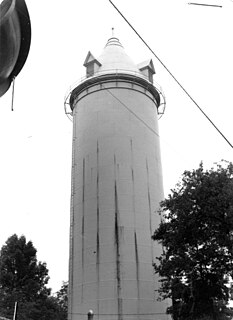 W
WThe Reading Standpipe was a historic water tower atop a hill near the corner of Auburn and Beacon Streets in Reading, Massachusetts. The 138-foot (42 m) tower was built in 1890-91 as part of Reading's first water supply system, and was for many years a significant community landmark. The tower was built of steel and wrought iron in a style reminiscent of medieval fortifications.
 W
WThe Sodium Reactor Experiment was a pioneering nuclear power plant built by Atomics International at the Santa Susana Field Laboratory near Simi Valley, California. The reactor operated from 1957 to 1964. On July 12, 1957 the Sodium Reactor Experiment became the first nuclear reactor in the United States to produce electrical power for a commercial power grid by powering the nearby city of Moorpark. In July 1959, the reactor experienced a partial meltdown where 13 of the reactor's 43 fuel elements partially melted, and a controlled release of radioactive gas into the atmosphere occurred. The reactor was repaired and restarted in September 1960. In February 1964, the Sodium Reactor Experiment was in operation for the last time. Removal of the deactivated reactor was completed in 1981. Technical analyses of the 1959 incident have produced contrasting conclusions regarding the types and quantities of radioactive materials released. Members of the neighboring communities have expressed concerns about the possible impacts on their health and environment from the incident. In August 2009, 50 years after the occurrence, the Department of Energy hosted a community workshop to discuss the 1959 incident.
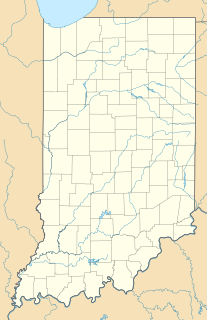 W
WThe Sweet Gum Stable, also known as Farmer's Feed and Supply, was located at the southeast corner of Main and W. Seventh Street in New Albany, Indiana. The property was a stop of the Underground Railroad, ten blocks west of another stop, the Town Clock Church, and a mere block away from the River Jordan for fugitive slaves, the Ohio River. The stable was built in 1877, and consisted of a balloon frame stable with an attached small brick and frame dwelling constructed about 1836. A feed store was added to the building in 1886. The structured measured 60 feet by 120 feet and encompassed the entire lot.